home > a lifetime evolution from drawing to painting > from 1908 to 1914
Relevant content of these pages has been moved to: www.piet-mondrian.eu
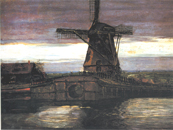 |
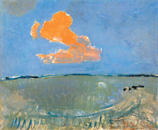 |
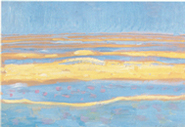 |
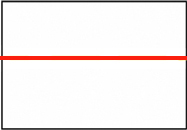 |
 |
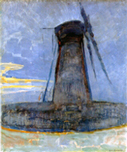 |
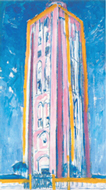 |
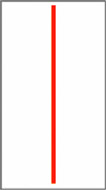 |
|
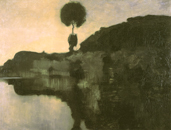 |
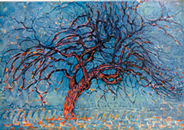 |
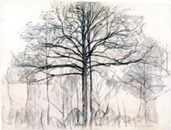 |
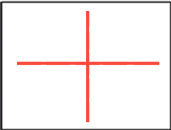 |
Mondrian begun around 1907 to use colors corresponding more to his inner vision rather than the more immediate appearance of things.
At the same time the painter tended on the one hand to extrapolate the natural element, which he began to identify with a primarily horizontal space and on the other to accentuate in the opposite direction (vertical) the shape of the non-natural spaces, the artificial, man-made spaces (windmills, lighthouses).
While horizontal extension predominates in the landscapes and vertical development in the buildings, the two opposing directions interpenetrate in the figure of a single tree which is another recurrent motif of this period.
What the artist sees in the figure of a tree is a vertical (the trunk) interacting with horizontals (the branches).
If the vertical stands for an artificial, man-made space (which Mondrian later identified with the spiritual), how can this fit into the image of a tree which is nature?
Further developments will show how Mondrian did consider the spiritual part of the natural.
«By the interiorization of that which is known as matter, and the exteriorization of that which is known as spirit - up to now, all too separate - matter/spirit becomes a unity».(Mondrian)
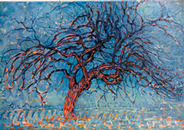 |
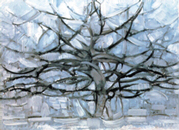 |
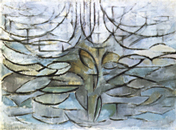 |
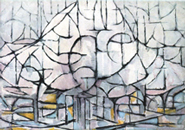 |
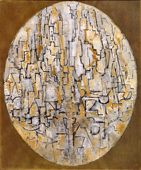 |
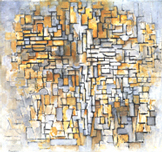 |
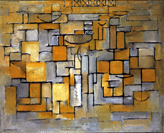 |
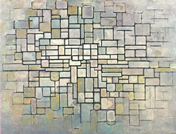 |
Around 1911 the painter opens up to the influence of Cubism.
The tree is the guiding motif of the evolution which takes place between 1911 and 1913.
As opposed to Naturalism, Cubism introduced a dynamic perception of the external world. For Mondrian Cubism represented most of all the possibility of finding an "inner landscape" capable of evoking a universal image of the outer world.
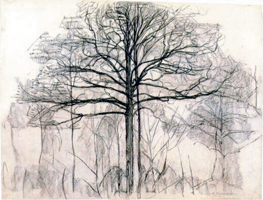 |
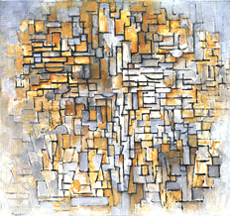 |
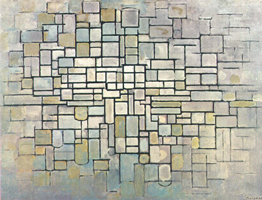 |
A |
B |
C |
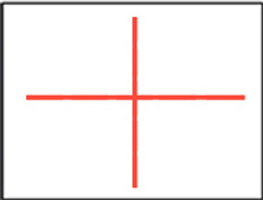 |
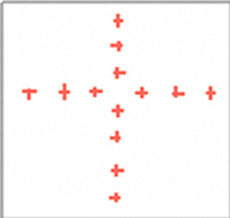 |
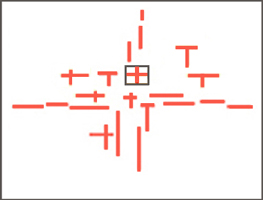 |
The relationship between horizontal and vertical which we see expressed in a rather univocal and static way in the naturalistic tree ( A), disintegrates (B) and takes on ever changing combinations (C). In the centre of C we still see the basic structure of the naturalistic tree but all around we are now confronted with many possible variations of it. In an abstract form the cubist composition tells us that there are many different types of trees and each of them appears in a different way according to the viewpoint.
What we have seen so far is confirmed by a new group of works Mondrian paints in 1914. A group of sketches, drawings and gouaches inspired by the sea (1) and by a pier jutting out from the beach into the waters. The latter are therefore also called Pier and Ocean.
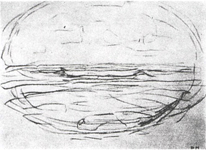 |
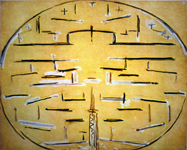 |
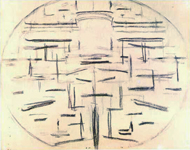 |
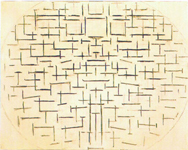 |
| D | E | F | G |
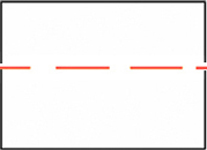 |
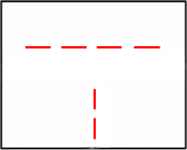 |
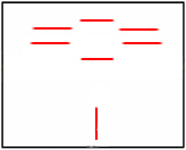 |
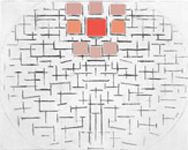 |
The painter seems here to make a sort of summary of the work he had done from 1906 to 1911. He starts from a sea landscape (D), that is to say, from the horizontal natural expanses of 1909-10 and from the vertical man-made elements such as the windmills, the lighthouses and church towers which take now the form of a pier (E, F, G).
The pier develops from the bottom in the center of the composition like the trunk of the tree. Same as the trunk, the vertical (for Mondrian a symbol of the spiritual) tends here to concentrate the horizontal endless expansion of nature (the sea).
The interaction between expansion and concentration generate a rectangular field (E) which hints to a square area (F) taking a definite shape in the centre of the composition (G). The rectangle we have seen in Composition II (C) becomes now a square.
 |
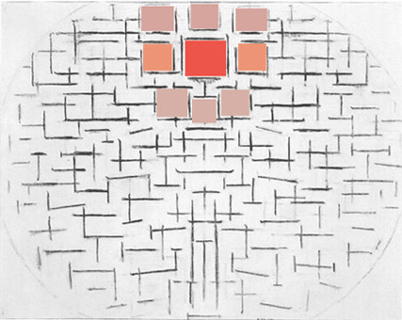 |
The more indefinite squares all around the central square suggest a progression from the imbalanced and precarious relations between horizontal and vertical lines to a more stable equivalence of opposites. Tee central square seems slightly pulled toward the sides by two smaller squares. This creates an horizontal tension which reinforces the central square in its quest for equivalence and unity and, at the same time, suggests a re-opening of the equivalence toward the multiple imbalances all around.
The composition shows us a multiplicity of imbalanced relations between the opposites which reach for a moment a perfect balance and then dissolves again.
This dynamic of multiplicity becoming one and than one re-opening to multiplicity will guide Mondrian throughout all his life and his last accomplished painting, Broadway Boogie Woogie, will be the most beautiful example of it.